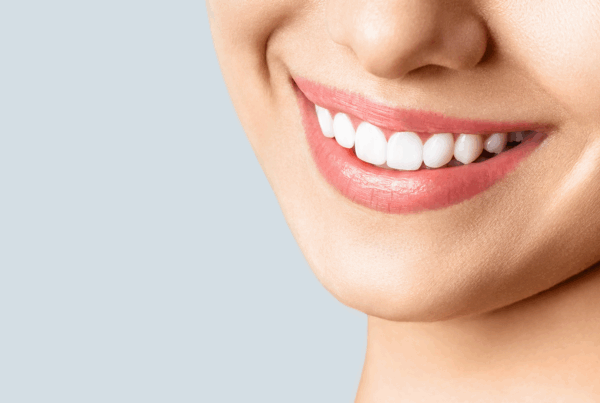A straighter smile has never felt more achievable. Clear aligners such as Candid and Invisalign® slip over teeth like lightweight shields, staying nearly invisible while they work. They pop out at mealtimes, feel gentle on cheeks and gums, and come without the brackets and wires of traditional braces. Yet every benefit arrives with one expectation: you must wear the trays long enough each day for them to move teeth.
“Is it hard to keep up with clear aligners?” is one of the most common questions we hear at Encino Dental Studio. The honest answer is that success depends far more on habit than on willpower. Think of clear aligners as a partnership: the trays provide steady pressure, while you decide how consistent that pressure remains. Below is a practical look at what “keeping up” really involves, why wear time matters so much, and how simple routines can make the process feel almost effortless.
 Why Consistency Is Everything
Why Consistency Is Everything
Clear aligners rely on gradual, controlled movements. Each tray in your series is engineered to nudge teeth only a fraction of a millimeter toward their new positions. Remove the trays too often and that gentle pressure stops, slowing or even reversing progress.
- Movement biology
Bone remodels itself in response to near‑constant force. When trays stay in place, bone dissolves on one side of the tooth root and deposits on the other, allowing the root to shift. Interrupting that force means the biological signal switches off. - Comfort connection
Consistent wear keeps tenderness minimal because each tray moves teeth in predictable, micro‑adjustments. If you skip hours, a new tray feels tighter than it should, making you more likely to take it out again, a cycle that delays results. - Time and cost
Every missed day can add days to the treatment plan. Longer plans can require additional trays, more in‑office visits, and higher overall fees.
Think of clear aligner success like physical fitness. Steady effort maintains progress, while sporadic workouts leave muscles sore and goals out of reach.
 How often do you really have to wear clear aligners like Candid and Invisalign?
How often do you really have to wear clear aligners like Candid and Invisalign?
Most orthodontists recommend 20 to 22 hours of daily wear. That leaves a two‑ to four‑hour window for meals, coffee breaks, and oral care.
In practice, patients adapt faster than they expect. Setting a timer when trays come out, say, a fifteen‑minute countdown during lunch, turns wear time into an automatic habit rather than a mental burden.
Building a Wear‑Time Routine
- Aligner case always on hand
Keep the storage case in your pocket, purse, or desk drawer so trays never end up in a napkin that gets tossed. - Designated cleaning moments
Brush and rinse trays during regular tooth‑brushing. Combining the two tasks adds no extra minutes to your day. - Track hours with technology
Smartphone apps, smartwatch timers, or a sticky note on the fridge can remind you to pop the trays back in.
When these small steps become second nature, twenty hours sounds less like a rule and more like your daily baseline.
 What happens if you don’t wear clear aligners as directed?
What happens if you don’t wear clear aligners as directed?
Skipping hours here and there may feel harmless, but the cumulative effect can derail your timeline. Consistency is not about perfection; it is about staying within the two‑hour removal window on most days. Occasional lapses happen. The key is recognizing them and getting back on schedule quickly.
- Extended treatment time
Teeth move only when gentle pressure is present. Lose the pressure, and your dentist may need to reorder trays, adding weeks or months to the plan. - Poor aligner fit
If teeth drift, the next tray will not seat properly. Small gaps appear, causing discomfort and forcing you to repeat earlier trays. - Increased costs
Extra appointments or replacement trays can incur additional fees. - Unpredictable outcomes
Treatment plans assume faithful wear. Deviations can leave rotations or spacing errors that need refinements later.
If you notice a tray feels loose or does not seat fully, wear it overnight, reduce unnecessary snacking the next day, and contact Encino Dental Studio for guidance.
 What are some tricks for staying on track with Invisalign and Candid?
What are some tricks for staying on track with Invisalign and Candid?
Success hinges on planning ahead and making life easier for future you. Try the following field‑tested strategies:
- Pair aligners with daily rituals
Insert trays after brushing in the morning, before leaving a restaurant, and right after evening skin care. Habit‑stacking links aligners to tasks you never forget. - Opt for straw sipping when trays are out
Water is the only drink you can sip with trays in. If you love coffee or tea, schedule those beverages during mealtimes or use a straw immediately before you reinsert trays, reducing the minutes your aligners stay off. - Carry a travel care kit
A travel toothbrush, toothpaste, and a few cleaning crystals fit easily in any bag. When you meet friends for lunch, you can clean and reseat trays on the spot. - Use chewies for perfect seating
Aligner chewies, small foam cylinders, help seat trays fully after each insertion. Five minutes of gentle biting twice daily keeps gaps at bay. - Freeze your previous pair
If a tray cracks or disappears, wearing the previous set from the freezer maintains tooth position until you can visit us. Frozen storage keeps bacteria dormant and the plastic in shape. - Set visible reminders
Sticky notes on mirrors, laptops, or car dashboards keep clear aligners top of mind. A bright color or motivational quote works wonders. - Reward milestones
Every time you move to a new set, celebrate with a no‑food treat, perhaps a new playlist, a quick stroll, or an episode of your favorite show. Positive reinforcement builds consistency. - Ask about attachments
Tiny tooth‑colored bumps help trays grip and rotate teeth more effectively. Precision wings or bite ramps can help patients who clench or grind. - Embrace aligner‑friendly eating
Stick to three meals and one snack, choose quick‑eat options, and drink plenty of water. These habits protect oral health while maximizing wear time. - Stay in touch with your dental team
Digital scans, photo uploads, or brief in‑office visits catch fit issues before they become setbacks.
 Aligners, lifestyle, and realistic expectations
Aligners, lifestyle, and realistic expectations
Maintaining clear aligners does not require a radical lifestyle overhaul. It asks for mindfulness and a willingness to create mini‑routines that serve your dental goals. Think of each aligner set as a teammate. The more you treat wear time like brushing or showering, non‑negotiable parts of the day, the less mental energy it demands.
Comfort tips
- Change trays before bedtime so initial tightness fades while you sleep.
- Rinse with cool water to soothe gums and keep trays fresh during the day.
- Eat soft foods on changeover days to avoid added pressure.
Cleaning essentials
- Rinse trays every time you remove them.
- Brush with clear, scent‑free soap and a soft brush each night.
- Soak trays once a week in cleaning crystals or retainer cleaner.
- Avoid abrasive whitening pastes that scratch the plastic.
Diet and staining
Trays come out for meals, but foods that stain, turmeric, curry, red wine, can tint saliva that seeps into aligners later. Brush thoroughly before reinsertion to keep trays crystal clear. Chewing gum with trays in place is a no‑go because it sticks to the plastic. Sugar‑free mints are a safer option for fresh breath.
Sports and social events
Aligners are slim enough for most sports, though you should wear a mouthguard for high‑contact activities. Speech adapts within a week. For photos, pop trays out briefly, but keep total removal time within your daily two‑hour budget.
Travel readiness
Pack your next set of trays, the current set, and cleaning tools in carry‑on baggage. Time‑zone changes do not require adjusting tray change schedules. If you lose a set, wear the prior one and call us as soon as possible.
The finish line: retainers and long‑term care
Once active treatment ends, retainers hold your new smile in place. They look similar to aligners but are worn on a maintenance schedule, often full time for a few weeks, then nightly. Skipping retainers can undo months of progress, so treat them with the same respect as your aligners.
Schedule Your Clear Aligner Consultation Today
Ready to transform consistent aligner wear into a confident new smile? Encino Dental Studio combines advanced technology with caring expertise so each day of treatment feels straightforward and supported. Schedule your consultation now and let us design a clear aligner plan, whether Candid, Invisalign, or both options, that fits your lifestyle as comfortably as your trays fit your teeth. Your future smile is taking shape, and we cannot wait to help you reveal it.







